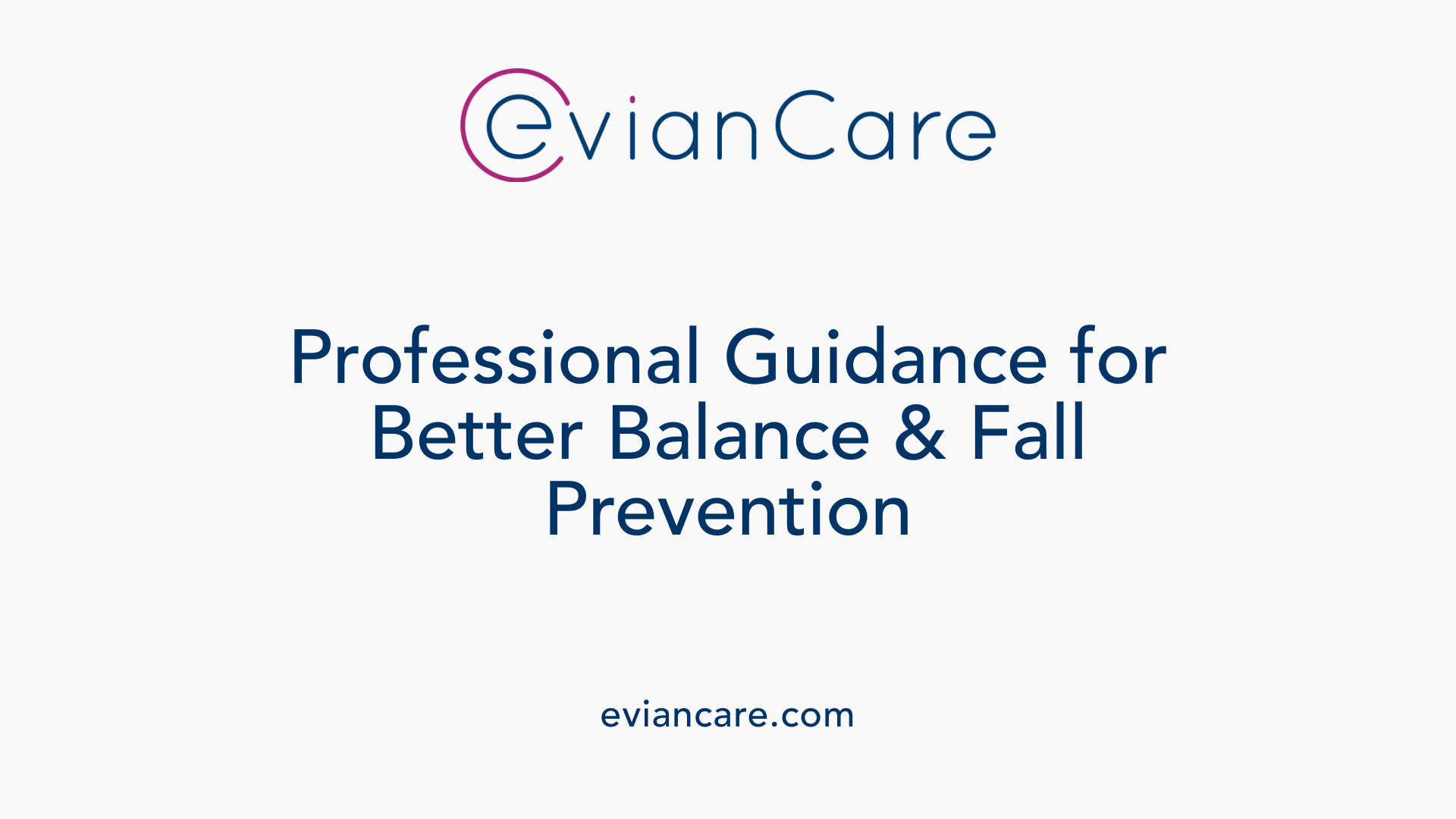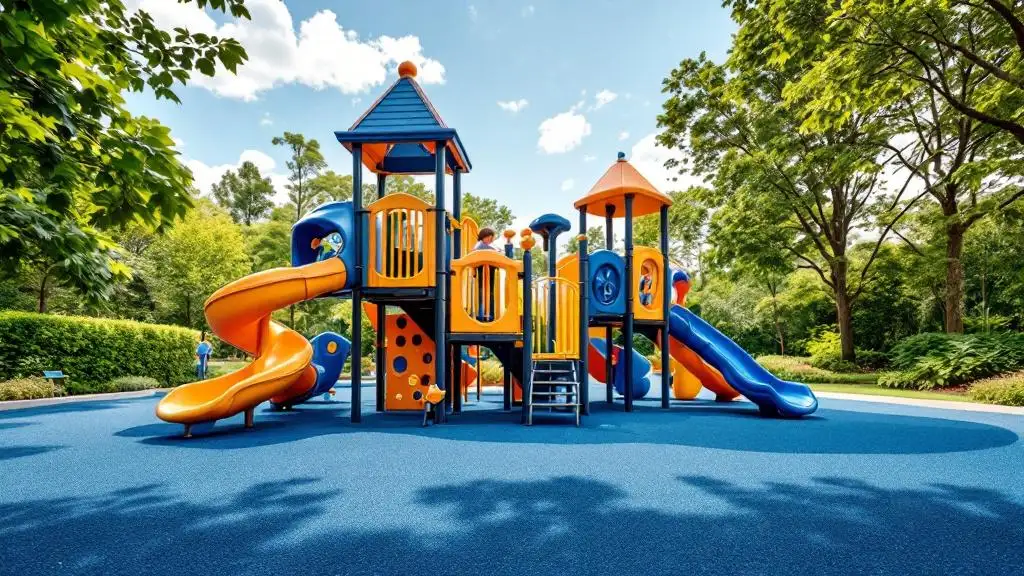
Understanding the Importance of Balance and Coordination Exercises
Maintaining good balance and coordination is essential for safe, independent mobility and overall health. These skills involve complex interactions among various body systems, including visual, vestibular, and proprioceptive inputs, processed primarily by the cerebellum. As we age or encounter neurological or musculoskeletal issues, our balance can decline, increasing fall risk and impairing daily activities. Fortunately, physical therapy offers structured, evidence-based exercises designed to restore and enhance these vital functions. This article explores the benefits, techniques, suitable routines for all age groups, and how to effectively incorporate balance and coordination exercises into everyday life.
Benefits of Engaging in Balance and Coordination Exercises

What are the benefits of engaging in exercises to improve balance?
Practicing balance and coordination exercises provides a variety of health advantages. One of the most significant is the reduction of fall risk, which is especially critical for older adults and individuals with mobility issues. These exercises help strengthen the muscles in the legs, core, back, and glutes, all of which are vital for maintaining stability and proper posture.
Beyond muscle strengthening, balance training improves proprioception—the body's ability to sense its position in space—and overall body awareness. This heightened sense of coordination results in smoother, more controlled movements, and better agility. Such improvements make daily activities like walking, climbing stairs, and reaching easier and safer.
Balance exercises are typically low-impact and highly adaptable, enabling participation across all age groups. They can be performed at home or in the gym, often requiring minimal equipment. Regular engagement in these exercises supports physical health, enhances mobility, and can also positively impact mental health by increasing focus, confidence, and cognitive function.
Incorporating balance and coordination work into routine fitness can promote independence, prevent injuries, and contribute to a better quality of life for everyone, regardless of age or physical ability.
Simple Balance Exercises for Home Practice
 Maintaining good balance is vital for daily activities, overall mobility, and fall prevention. Fortunately, many effective exercises can be easily performed at home without special equipment.
Maintaining good balance is vital for daily activities, overall mobility, and fall prevention. Fortunately, many effective exercises can be easily performed at home without special equipment.
One of the simplest is standing on one leg. To do this safely, stand near a wall or a sturdy chair for support if needed. Keep your foot off the ground and hold the position for 10 to 30 seconds. Switch legs and repeat. This exercise helps strengthen the stabilizing muscles in your legs and improve proprioception.
The heel-to-toe walk is another straightforward activity. Walk in a straight line, placing the heel of one foot directly in front of the toes of the other. Focus on controlled, deliberate movements. This exercise not only enhances balance but also improves gait and coordination.
Weight shifts are easy to incorporate. While standing with feet shoulder-width apart, shift your weight slowly from one side to the other. Hold each position briefly, then repeat. Doing this helps increase your awareness of weight distribution and strengthens your core and leg muscles.
For a dynamic movement, sidewalk walking or side-stepping back and forth on your driveway or hallway can be beneficial. Incorporate side steps with a slight squat for added challenge. These movements promote lateral stability and coordination.
A fun activity for concentration and balance is the guitar string walk. Imagine walking on a thin wire or tightrope, placing one foot directly in front of the other with minimal wobbling. Practicing this improves your ankle stability and overall control.
For added safety and effectiveness, perform these exercises near a support like a wall or chair. As your strength and confidence grow, gradually increase the duration and reduce dependence on support.
By consistently practicing these simple balance exercises at least twice a week, you can develop greater stability, mobility, and confidence. Integrating activities like tai chi or incorporating these movements into daily routines helps maintain and improve overall health and fall resistance for all ages.
Targeted Balance and Coordination Exercises Across Populations

What are the most effective exercises to improve balance and coordination?
Enhancing balance and coordination involves a variety of proven exercises designed to strengthen the core, legs, and stabilizing muscles. Static activities like standing on one leg or tandem stance (heel-to-toe walk) help develop foundational stability. Dynamic movements such as heel-to-toe walking, side-stepping, and 3-way kicks challenge your balance while improving gait and coordination.
Functional exercises, including sit-to-stand and gait training, are particularly useful for daily activities, helping individuals move more confidently and safely. Using equipment like balance pads, wobble boards, and Bosu balls adds difficulty and engages the body's stabilizers, promoting better control and stability.
Practices like Tai Chi and yoga are highly effective for promoting overall body awareness, flexibility, and slow, deliberate movement—which collectively improve coordination. These exercises are adaptable to different fitness levels and can be performed at home or in a professional setting.
For older adults and seniors, tailored exercises such as tandem stands, flamingo stands, and chair-based movements are recommended to prevent falls. Children benefit from playful activities like bean bag balance, musical statues, and hopping games that improve coordination through fun. Athletes incorporate routines like banded toe taps, single-leg cross-body punches, and balance board exercises to enhance control and agility.
Consistency is crucial; performing these exercises regularly, ideally three or more times weekly, yields the best results. Gradually increasing complexity and difficulty ensures continuous improvement and helps prevent injuries. Whether through simple routines or advanced practices, targeted exercises foster better balance and coordination, supporting health and mobility across different life stages.
Physical Therapy’s Role in Balance Rehabilitation

How can physical therapy help improve balance and reduce fall risk?
Physical therapy plays a vital role in enhancing balance and preventing falls, especially among older adults and individuals with neurological conditions. Therapists start with thorough assessments to identify specific balance deficits, muscle weaknesses, or sensory impairments.
Based on these evaluations, therapists design personalized exercise routines that incorporate both static and dynamic balance exercises. Static exercises, such as single-leg stands and tandem stance, help strengthen stabilizing muscles and improve proprioception—the body's sense of position. Dynamic routines involve movements like weight shifts, walking on uneven surfaces, and functional tasks that mimic daily activities.
Gait training is another essential component where therapists work on improving walking patterns, especially in those with Parkinson’s or after a stroke. Vestibular therapy addresses dizziness or balance issues related to inner ear problems, promoting better stability.
Support and safety precautions are emphasized during therapy. Using support aids like bars, chairs, or balance balls helps prevent falls during exercises. Therapists also educate patients on safe environments and prescribe exercises that match individual capabilities, gradually increasing difficulty to foster confidence.
Addressing age-related decline involves strengthening key muscle groups—especially core, legs, and back muscles—and enhancing sensory integration. This comprehensive approach not only improves balance but also helps maintain independence and mobility.
By combining tailored exercises, safety measures, and education, physical therapy reduces fall risks, boosts strength and coordination, and supports overall well-being for those vulnerable to balance issues.
Incorporating Balance Exercises into Daily Life and Routine

How can I incorporate balance and coordination exercises into my daily routine?
Integrating balance and coordination exercises into your everyday activities can be simple and effective. Start by practicing static exercises like standing on one leg while brushing your teeth or doing heel-to-toe walks while waiting in line. These small activities help strengthen stabilizing muscles and improve proprioception.
Adding dynamic movements such as sideward walking or grapevine steps can enhance lateral agility and overall stability. Aim for specific repetitions, and gradually increase the complexity or duration to challenge your balance progressively.
Incorporate these exercises with your regular routine. For example, while doing household chores, you can perform ankle lifts or gentle weight shifts. During errands, try exercises like standing on one leg or moving across uneven surfaces.
Enrich your regimen with structured activities like yoga or Tai Chi a couple of times each week. These practices improve flexibility, core strength, and balance control.
Always prioritize safety—use supports like a wall or stable chair if you feel unsteady. As your confidence grows, increase difficulty by closing your eyes, reducing support, or extending the time spent balancing.
By blending simple exercises into daily routines, you support better stability, reduce fall risks, and enhance overall mobility and independence.
Supporting Systems and Physiological Aspects of Balance
What are the physiological systems involved in balance control?
Balance relies on the seamless coordination of multiple body systems that work together to maintain stability and posture. These include the visual, vestibular, proprioceptive, and motor control systems.
The cerebellum, situated at the back of the brain, plays a central role in processing sensory data from these systems. It continuously integrates information to adjust muscle activity, helping to keep the body balanced.
The vestibular system, located in the inner ear, detects head movements and position, providing essential information about spatial orientation. Visual cues guide us in perceiving our environment and positioning ourselves accordingly.
Proprioception involves sensory receptors in muscles, joints, and skin that provide awareness of limb position and movement, crucial for making real-time adjustments.
Age-related challenges, such as decline in these sensory and motor functions, along with weakening muscles, limited joint mobility, and neurovascular issues, can impair balance. These changes increase the risk of falls and injuries in older adults.
To counteract these issues, multicomponent training programs have proven effective. They combine balance-specific exercises with strength, flexibility, and aerobic activities. This holistic approach helps to improve the integration of sensory inputs, strengthen muscles, and enhance overall stability and health.
In summary, maintaining good balance depends on the proper functioning and coordination of visual, vestibular, proprioceptive, and motor systems. Addressing age-related declines with comprehensive exercise regimens can significantly reduce fall risk and promote independence.
Progression and Safety Tips for Effective Balance Training
How can progression in exercises improve outcomes and safety?
Progressing in balance exercises is essential for achieving better results while minimizing risk. Starting with simple tasks like weight shifts or standing on one foot helps build foundational stability. As strength and confidence grow, difficulty can be increased by extending the duration of each exercise, narrowing the base of support, or closing the eyes to challenge sensory input.
Incorporating dual-task challenges—such as performing cognitive activities like counting, or carrying objects—simulates real-world situations where multitasking is common. Using unstable surfaces such as wobble cushions, balance boards, or BOSU balls significantly heightens the challenge, activating core muscles and improving overall stability.
Support and supervision play crucial roles, especially for beginners or older adults. Holding onto a wall or chair provides additional safety, allowing individuals to focus on balance without the fear of falling.
Regular assessments by a physical therapist help personalize exercise routines, identify progress, and prevent overexertion. This tailored approach ensures safety and promotes steady improvements.
Gradually increasing the complexity and difficulty of exercises over time enhances both safety and effectiveness. Such progression results in improved control, strength, confidence, and reduced risk of falls, empowering individuals to maintain activity levels and independence.
Building Confidence and Independence with Balance Training
Consistent practice of targeted balance and coordination exercises can dramatically improve mobility, reduce fall risk, and promote independence across all ages. Tailoring routines to individual needs, engaging in multicomponent training, and progressing gradually are key to achieving long-term benefits. Whether at home, in therapy, or as part of a group program, integrating these exercises into daily life can lead to better health, enhanced confidence, and a safer, more active lifestyle.
References
- Balance exercises: 13 Moves with Instructions - Healthline
- Balance exercises - NHS
- Balance Training - Physiopedia
- 5 Exercises to Restore Strength, Balance and Agility - AARP
- Top Exercises for Improving Balance and Coordination
- Balance exercises - Mayo Clinic
- Physical Therapy for Balance: Benefits and Exercises
- Static Balance vs. Dynamic Balance Exercises - Propel Physiotherapy












